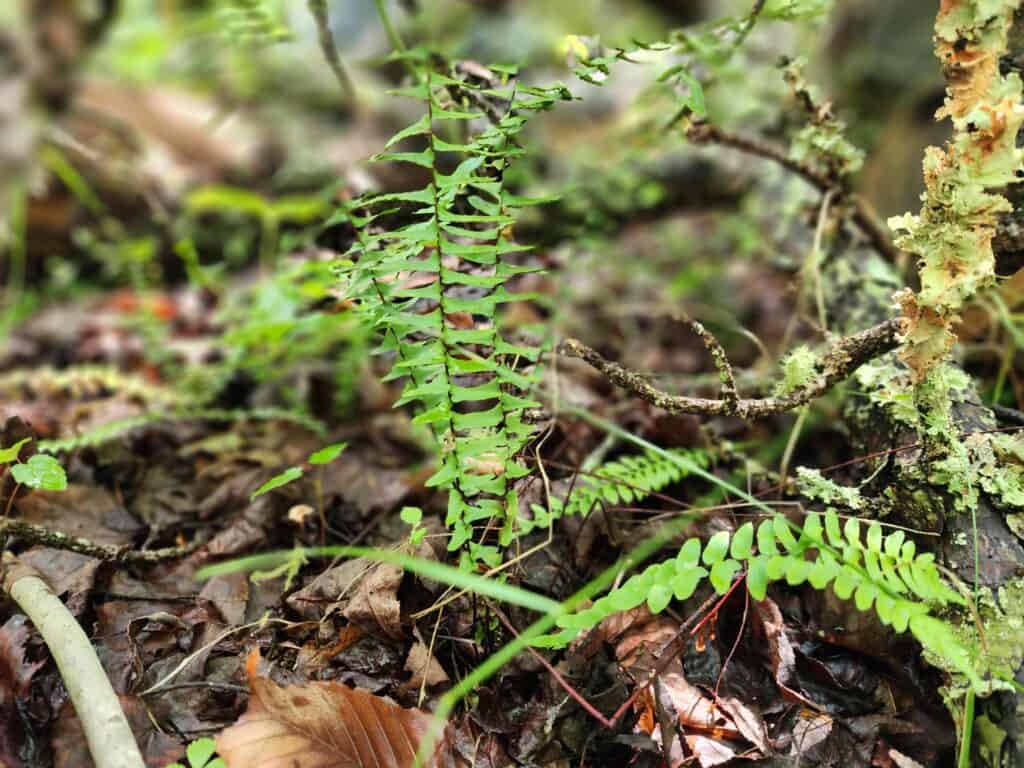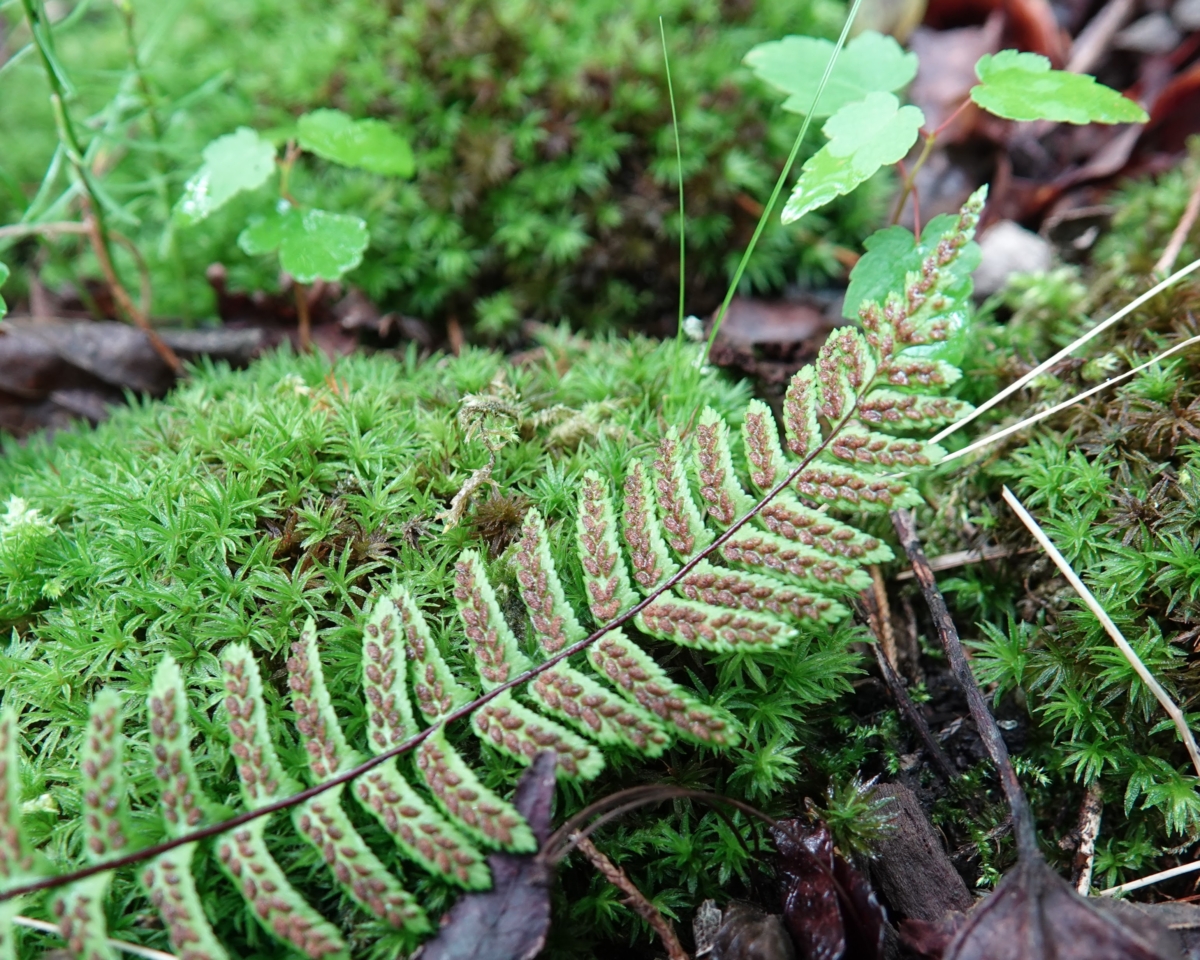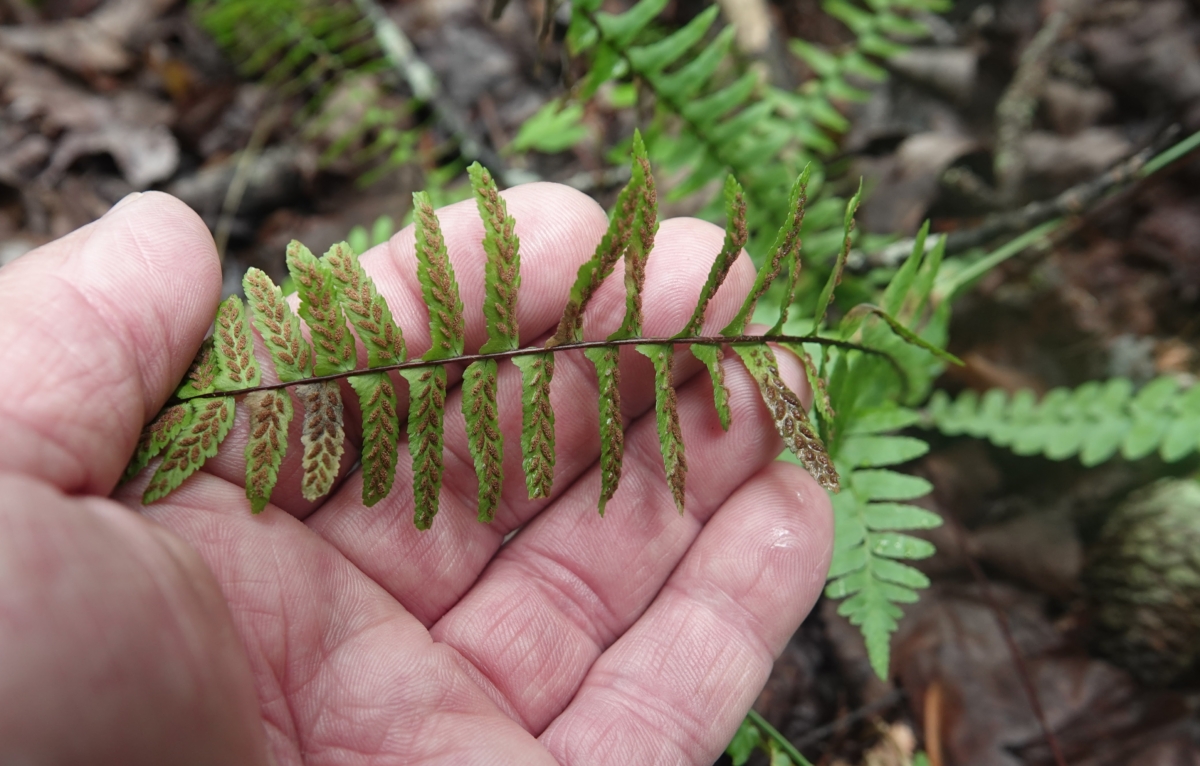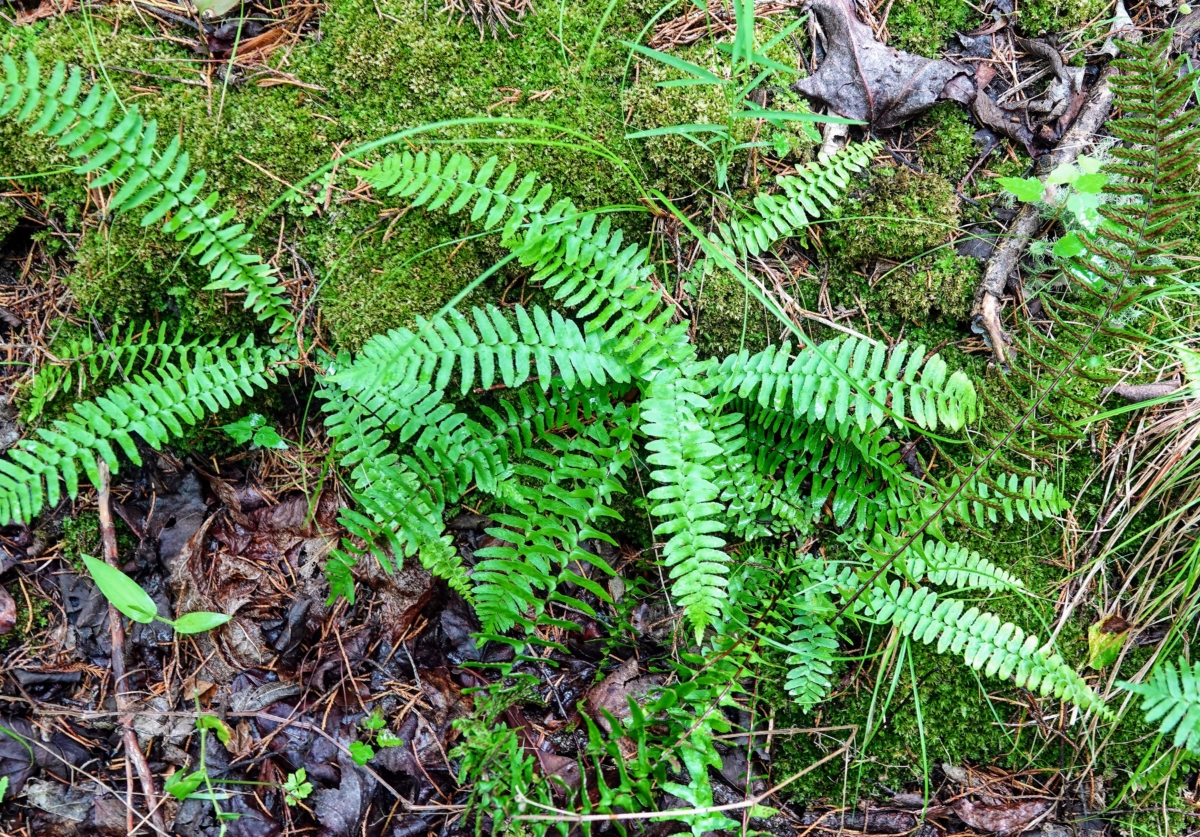An Ancient Life Form

BY ANTHONY KLOCK, CU Maurice River Trustee
The moniker “ebony” spleenwort refers to the lustrous dark brown stem, more specifically called a rachis or axis.
Photos by TONY KLOCK
Visiting Cumberland County’s numerous and diverse woodlands, one may take notice of the variety of fern species found here. Ferns and their “allies”—horsetails, club mosses, etc., are truly ancient life forms and are most often found in shady and damp environments around the globe. Though they are the second-most diverse group of vascular plants, there are relatively few fern species extant on Earth compared to the number of flowering plants—between 10,000 and 20,000 ferns vs. more than 300,000 flowering plants. Cumberland County is home to close to two dozen fern species, and ebony spleenwort (Asplenium platyneuron) is a fairly common one found in our local landscapes.
Ebony spleenwort ranges east of the Mississippi River from the Gulf of Mexico to southern Canada. Strangely enough it is also endemic to the country of South Africa, yet virtually nowhere else on Earth. It is tolerant of a wide range of conditions, including partial to deep shade; it thrives in damp but well-drained to fairly dry soils. It is often found alongside fallen logs, rocky outcroppings, and in the undergrowth of forests and fields.
Identifying ebony spleenwort is relatively easy due to its diminutive size—six to 12 inches in height and spread; as well as its distinctive shiny dark brown stipe (stem) and rachis from which the leaflets, known as pinnae, occur; hence the descriptor, “ebony” spleenwort. The pinnae of the plant are not opposite each other but alternate along the axis. Spleenwort possesses both fertile and sterile fronds. The fertile spore-producing fronds are upright and wither after the season, whereas the sterile fronds tend to be more prostrate and are mostly evergreen.
Ferns and their allies, among the first vascular plants to appear on Earth, utilize an interesting reproductive strategy which evolved between 300 million and 400 million years ago, predating the appearance of seed-producing plants that developed in the Cretaceous period approximately 130 million years ago. The part of the fern we readily recognize is referred to as a sporophyte; this is most often the structure upon which the spores are produced, typically on the underside of the fronds. Sporangia, the structures that contain the fern’s spores, will disperse them into the air upon ripening. Among the millions of spores produced and released, a relatively few manage to alight on an appropriate spot and develop into the gametophyte stage. It is during this stage that fertilization occurs.
The gametophyte, a tiny heart-shaped structure anchored to the ground, produces male and female gametes. The male antheridia are small sac-like structures producing motile sperm and the female archegonia are flask-like structures containing a single egg. In the presence of moisture, fertilization takes place on the underside of the gametophyte structure.
Ebony spleenwort is capable of self- or cross-fertilization. As a result, a tiny new sporophyte develops in the notch of the heart and grows into a new fern. While this process may vary among species, ferns may also spread vegetatively through rhizoids or through proliferating buds which may form at the base of both fertile and sterile fronds and are capable of producing new ferns, often resulting in the development of colonies.

Each of these brown sori contain the sporangia wherein the thousands of spores are located, to be released when the time is right.

Ebony spleenwort’s leaflets, called pinnae, are arranged alternately along the center axis. There is a slight difference in the shape of the pinnae of the fertile fronds shown in the hand and the sterile fronds in the background of the photo.

Like many fern species, ebony spleenwort may form loose colonies alongside fallen logs, rock piles, and even old foundations of long disappeared human habitations.
Ferns have a long and mysterious folklore associated with them. Their lack of flowers and seeds spurred myths and legends imbuing them with supposed magical properties. In Eastern European tradition, it is believed that ferns produce a magical bloom on or around the summer solstice, also known as midsummer. Finding this flower, which is said to be guarded by strong evil spirits, may bestow upon the finder special magical powers, including the ability to understand the language of animals and birds, to see buried treasures, and to grant wishes.
Ferns are also associated with new life, fertility, and protection. In medieval times, dried ferns were hung in houses to prevent lightning strikes. Native American traditions also associated ferns with symbolic meanings. Ferns, through their ubiquity, also figured prominently in practical use including food, medicine, and basketry.
Ebony spleenwort is an interesting plant and, due to its adaptability to differing soil, pH, and moisture conditions, may be useful in the landscape, particularly in rock gardens and terraria.
Sources:
Peterson Field Guide to Ferns, Boughton Cobb.
Fern classification, structure & life cycle,” Botany Brisbane website.
“Ebony Spleenwort,” Missouri Department of Conservation website.
“Know Your Natives- Ebony Spleenwort,” Arkansas Native Plant Society website.
The Plants of South Jersey, Witmer Stone.
“Ebony Spleenwort,” Easyscape, Gardens Made Easy website.








